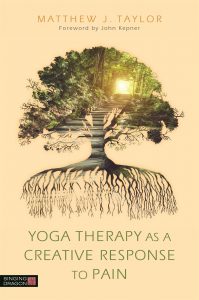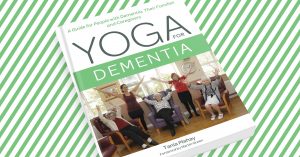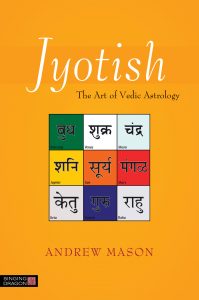 In this extract from Matthew J. Taylor’s latest book, Yoga Therapy as a Creative Response to Pain, Taylor discusses how yoga therapy can be used to decrease pain and the perception of pain.
In this extract from Matthew J. Taylor’s latest book, Yoga Therapy as a Creative Response to Pain, Taylor discusses how yoga therapy can be used to decrease pain and the perception of pain.
How does one teach from the wisdom of pain? And how could yoga therapy be a creative response? My hope is you are starting to see some answers emerge. (Pun intentional and literal.) In this section I will offer some direct implications to make some of this what they used to call “lieutenant-proof” in the army when I was a lieutenant. (Do note later, though, Nora’s caution around giving “direct” instructions.)
We “know,” taken together, the above findings are important because they demonstrate that the neural mechanisms involved in mindfulness- based pain relief are consistent with greater processing of sensory experience and at the same time decreases in pain appraisal (Zeidan et al. 2015). Our familiar practices of paying attention inward and editing narratives. Pain reduction may also occur by fine-tuning the amplification of nociceptive sensory events through top-down control processes of inhibition of incoming nociceptive information and that such pain relief does not reduce pain through one avenue, but rather multiple, unique neural mechanisms. Ah, CDSR. Zeidan and Vago (2016) also cite evidence that mindfulness meditation engages mechanisms that are distinct from placebo to reduce pain and that this could be of critical importance to the millions of chronic pain sufferers seeking a fast-acting non-opioid pain therapy. See the marketing section coming up next for how to use this information. There is a decoupling between “sensory and appraisal-related brain regions,” and similarly, between “sensory and affective pain” to increase coping with the pain that does improve. An alleviation of suffering even if pain is unchanged in intensity? This is the frequently reported decrease in the unpleasantness dimension of pain with respect to pain intensity (Zeidan et al. 2015) plus what we already discussed about yoga also altering the meaning, interpretation, and appraisal of nociceptive information, all of which could be important tools for producing more stable and long-lasting improvements in chronic pain symptoms. Wow! How do we do that?





 Dry Needling for Manual Therapists
Dry Needling for Manual Therapists



